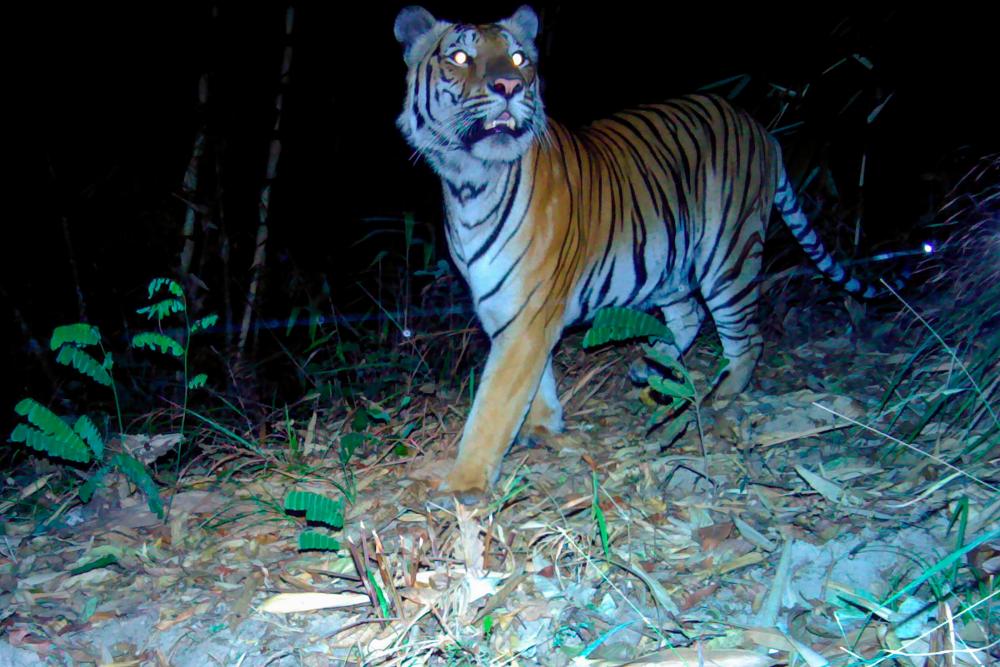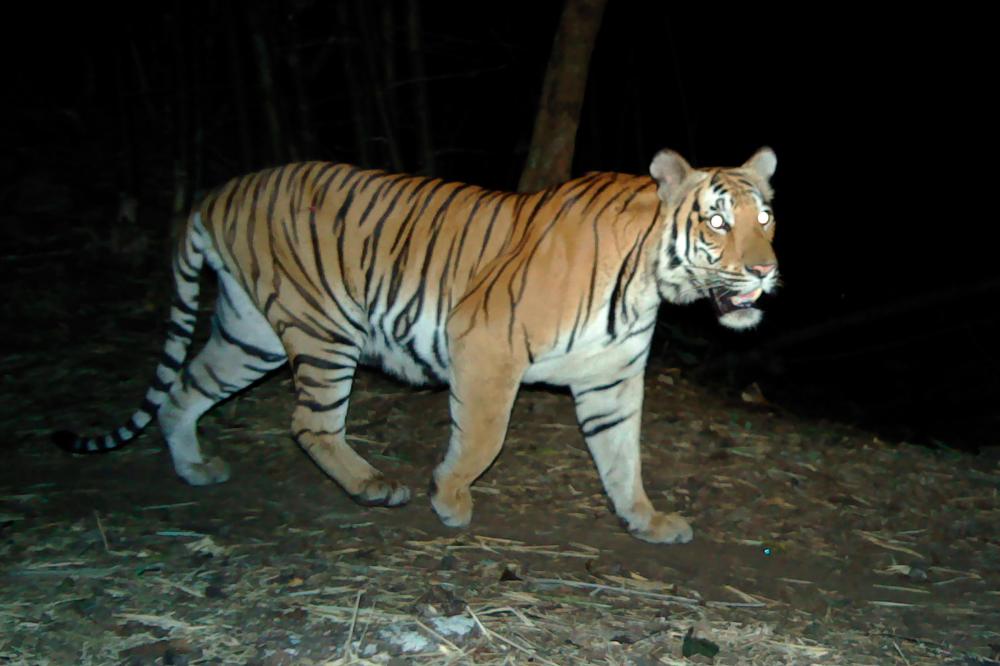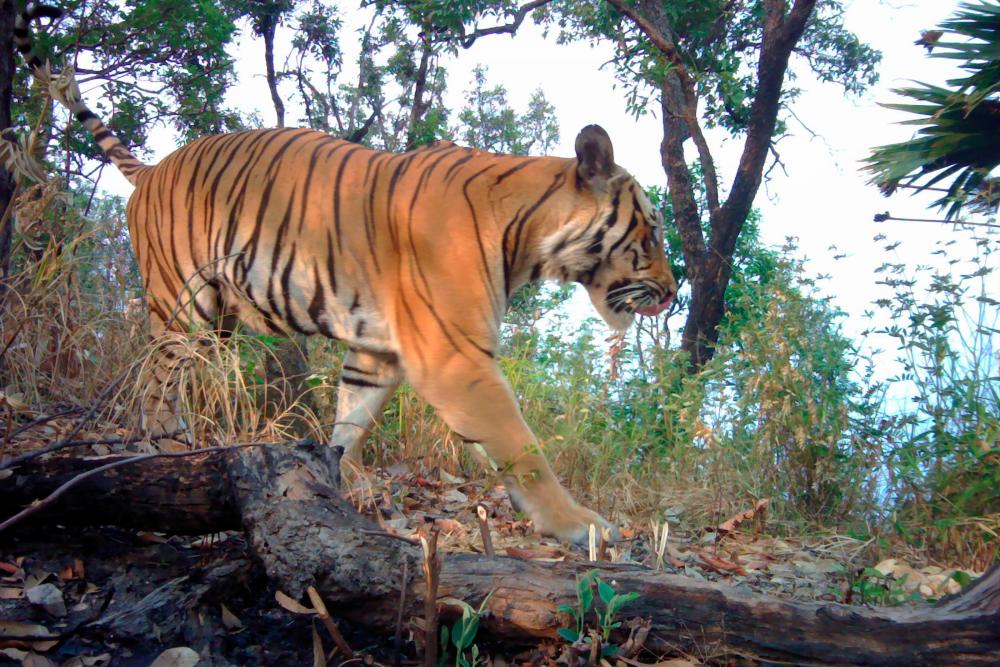RARE footage of previously unidentified tigers prowling the Thai jungle has been lauded by conservationists as evidence of a recovery for the endangered animal.
The zoologists said Southeast Asia is a key battleground in the fight to save the big cats, whose numbers globally have plummeted from about 100,000 a century ago to fewer than 4,000 today.
Demand for their striking pelts and body parts in China and Vietnam, which fuels poaching, is largely to blame.
To mark Global Tiger Day on Wednesday, conservation groups working in Thailand released rare photos and videos, the first in four years to
capture previously unrecorded individuals in the country.

In the video footage, several tigers slink past the camera traps, but one spots a hidden lens and approaches to investigate, sniffing the device.
Describing the footage as “very exciting”, John Goodrich, chief scientist with conservation group Panthera, said: “It’s a good indicator that what we’re doing is working. We’re starting to see the recovery of tiger numbers in the area.”
Thailand has boosted its conservation efforts over the last decade and is now believed to be home to up to 200 tigers.
The kingdom’s western jungles -- where the new images came from -- host the largest remaining breeding population of the Indochinese sub-species.
Its rangers will now monitor whether the newcomers establish territory in the area.
“In more than 20 years of fieldwork, it’s some of the best (footage) I’ve seen,“ said Eileen Larney, the Zoological Society of London’s country manager for Thailand.
“To witness apex predators, like tigers, returning to forests means the ecosystem is recovering, which is good for all wildlife.”
The recent success is partly down to specially designed “PoacherCams”, Goodrich said. The cameras automatically distinguish between people and animals, sending pictures of potential poachers to local police in real time.

But the future of the big cat is still precarious.
Cambodia, Laos and Vietnam have all lost their native populations, while Myanmar is thought to have just 23 individuals left in the wild.
“The focus right now needs to be on Southeast Asia, where tigers are in the most trouble,“ Goodrich told AFP.
However, “if you don’t have government support, it doesn’t work”, he added, pointing to India and Russia, where political backing for conservation programmes means numbers are stable or slowly rebounding.
Alongside poaching, other key threats are habitat loss and fragmentation, when roads or other developments isolate small populations, leading to inbreeding and a lack of genetic diversity. - AFP














